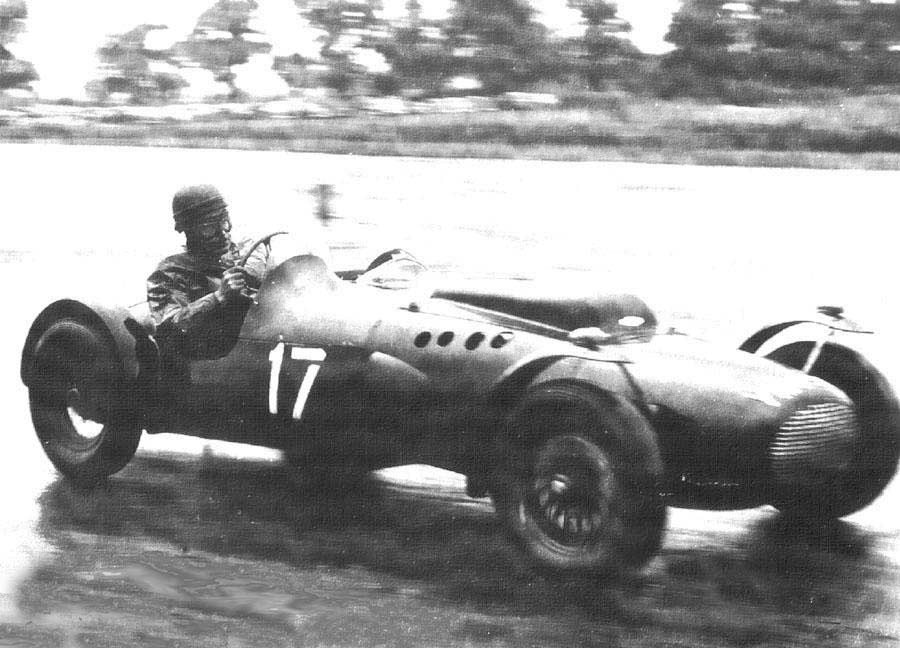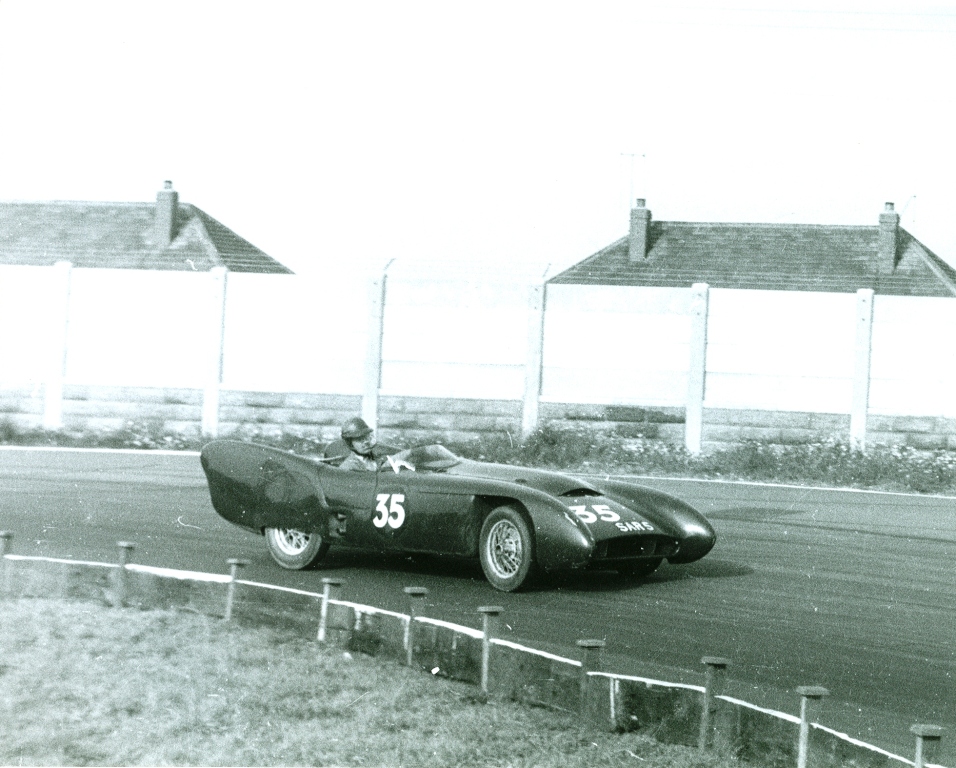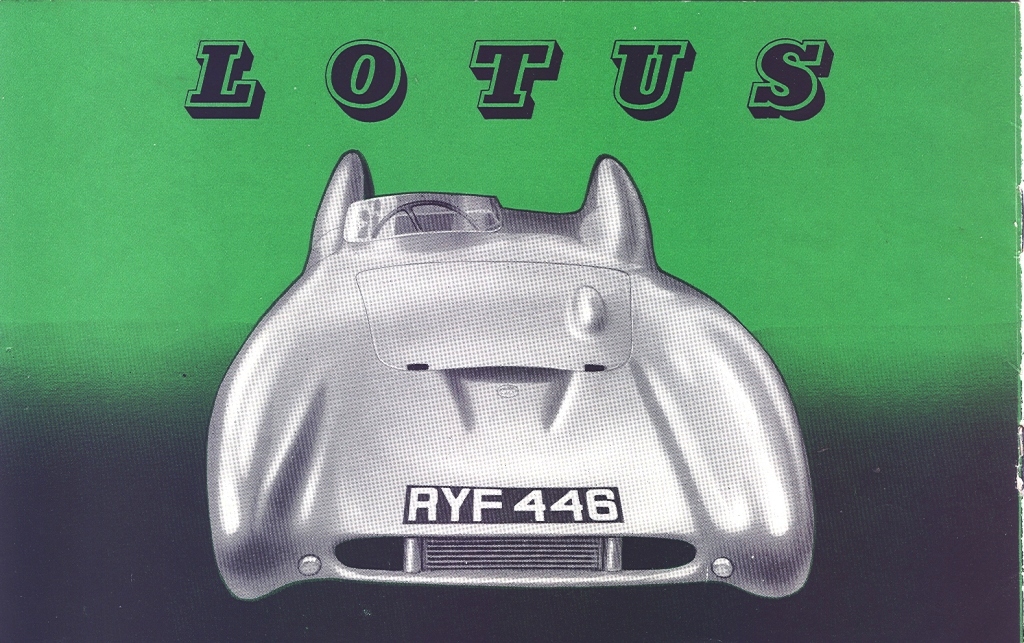 |
LOTUS SEVEN REGISTER |
the web site for the
Seven made by Lotus between 1957 and 1973
 |
LOTUS SEVEN REGISTER |
the web site for the
Seven made by Lotus between 1957 and 1973
| THE FIRST LOTUS MARK VII: Towards the end of 1952 Colin Chapman was commissioned to design and build a Formula 2 car around a 2 litre ERA engine by the Clairmonte brothers. The design was based around a space frame chassis with double wishbone front suspension and De Dion rear axle. As it turned out the ERA engine was blown up even before it reached the car and with Lotus busy building the Mark VI cars, the project was delayed. In the end the brothers lost patience and collected the unfinished project which they completed as a two-seater sports car powered by a 1960cc Lea Francis engine. It became known as the Clairmonte Special and was fairly successful on the race track during the 1953/4 seasons. As far as Chapman was concerned it was just an outside commission, similar to that of Vanwall and BRM and no Lotus designation number was allotted to it. |
 Clive Clairmonte in the "Clairmonte Special".
Clive Clairmonte in the "Clairmonte Special".
| MIKE COSTIN: During 1953, Mike Costin, an engineer with De Havilland had started helping build the Mark VIs at Hornsey in his spare time. Mike was to work at Lotus until the early 1960s before forming the famous Cosworth Engineering Company with Keith Duckworth. A NEW PROJECT: Good racing successes in 1953 along with John Bolster’s road test in the October 2nd. 1953 issue of Autosport bought a consistently full order book of Mark VI cars. With money pressures more relaxed, Colin began to think about a much more ambitious design for his next car. The requirements for this project were increased engine power, 4-speed gearbox, de Dion rear suspension, hydraulic brakes and a streamlined body. MIKE’S BROTHER FRANK: Colin’s sketches for the streamlined body concerned Mike Costin who suggested that his brother, Frank, a specialist in the field of aerodynamics should look at the design. The model that had been made was shown to Frank who added rear fins, a tonneau cover, rear wheel spats and a completely new longer front end. |
 Colin Chapman driving the Lotus Mark VIII.
Colin Chapman driving the Lotus Mark VIII.
| THE MARK VIII: The power unit chosen was the MG XPAG bored out to 1498cc with Lucas Laystall alloy head and twin SU carburettors, which claimed some 85bhp at 6,200rpm. The gearbox was from the MG TC, whilst the Lockheed brakes had large Alfin cast aluminium drums mounted outboard at the front and inboard at the rear. In order to counteract the additional weight of the aerodynamic body, a new ultra light triangulated space frame was constructed of 1¼” 20 and 18-gauge tubing. This turned out, as planned, to be a major advance in chassis design for the company and in fact was described by Messrs Costin & Phipps (Racing and Sports Car Chassis Design B. T. Batsford, 1961) as the ‘most nearly perfect sports car chassis yet made’. In 1954, with the licence number SAR 5, the first car was unveiled weighing just 10¼ cwt (521 Kg). With its slippery shape, it became known as the most potent 1500cc sports car in England if not the world. In all seven Mark VIIIs were made. Whilst very advanced in design, only Chapman’s Team Lotus car had any real successes on the racetrack. Seven Mark VIIIs were built. |
 Brochure for the Lotus Mark IX.
Brochure for the Lotus Mark IX.
| ENTER THE MARK IX & CLIMAX POWER: The car for following year (1955) was the Mark IX. The main differences from its predecessor were chassis/body design and power unit. The Mark VIII chassis, although pure in concept and incredibly stiff, was both prone to fractures adjacent to the welds and somewhat impracticable from a mechanics standpoint causing many hours of additional work when the engine removal was required. To overcome this, smaller section tubing was used and front and rear bodywork was made removable giving fuller access to mechanical parts and instrumentation. The other advance was the installation of a new lightweight engine. A derivative of the Coventry Climax fire pump engine, the 1098cc FWA (Feather Weight Automotive) unit was first seen in automobile competition at the 1954 Le Mans 24 Hour Race powering a Kieft sports racing car. Although the car retired after some 10½ hours with a seized rear axle, the new engine performed well up until that point. With a weight of around 200 lbs this aluminium cased unit with its overhead camshaft produced some 85 bhp in Stage 2 form quite early on. At the start of the season the Team Lotus cars were 9EHX powered by an MG engine which was usually driven by Colin and XPE6 powered by a Climax engine driven by Peter Jopp. However only Climax and Ford sidevalve powered cars were available to customers. Two Climax powered cars were sent over to the U.S.A. just in time to run in the Sebring 12 Hours race. One did not finish and the other was disqualified over an infraction of the rules. Later in the season girling disc brakes were available. FIRST ENTRY AT LE MANS: Lotus entered one car (XPE6) for the to be ill-fated 1955 24 Hour Race at Le Mans. It had thicker aluminium panels and was driven by Colin and Ron Flockhart who had some experience at the long distant race on the Sarthe circuit. Just after the halfway mark an oil leak caused a slipping clutch and the car came off the track at Arnage. However, they were disqualified for reversing back onto the circuit before being granted permission to do so by the marshals, a result of over-caution after the disaster earlier in the same race involving a Mercedes driven by Levegh. An hour earlier, after 12 hours they had been in 27th position overall. EARLS COURT MOTOR SHOW: As members of the SMMT, Lotus were now entitled to a stand at the 1955 Motor Show at Earls Court. On it they displayed a bodiless Mark IX showing off the chassis and suspension which Lotus had become famous for. There were now two Mark IX models: the ‘Le Mans’ with FWA Coventry Climax engine and de Dion rear axle and the ‘Sport’ for the 1172 Formula with Ford 1172cc side-valve engine, 3-speed gearbox and back axle. Autosport’s contemporary road test gives the following figures for the Climax powered car: 0 to 100mph 23.6 secs, Standing Quarter Mile 15.8 secs, Top Speed 128mph, Fuel consumption 20mpg (Racing) 30mpg (Road). In all some 24 Mark IXs were built. |
| THE MARK X: Also in 1955, Lotus produced their Mark X Sports Racing car. With Mark VIII front and Mark IX rear ends, it was powered by the Bristol 4-cylinder s.o.h.c. 1971cc engine with matching gearbox to satisfy demand for the larger engine classes in competition. Six Mark Xs were made. All photographs by courtesy of Ferret Fotographics TEL: 01453-543243 Sources and further reading: Colin Chapman – The Man and his Cars by Jabby Crombac. (1986) Lotus – All the Cars by Anthony Pritchard (1990) The Lotus Book by William Taylor (1998) JWW [previous chapter] [next chapter] [back to menu] |